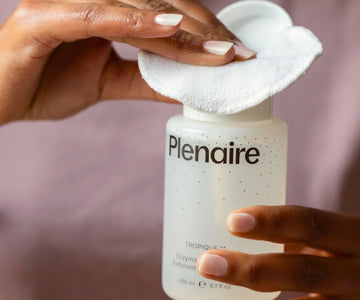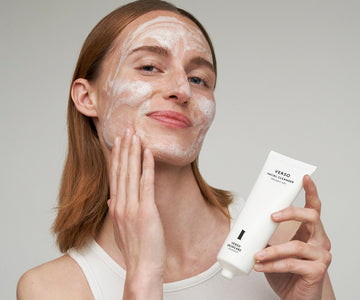
Let’s talk about the single most important part of your beauty and skincare routine: cleansing. Cleansing comes before anything else and is the foundation for all the skincare which follows. Cleansing effectively is so important for ensuring that your skin remains healthy and bacteria-free. Not only does an effective cleanse keep your skin clear of oils and congestion, it also ensures that dead skin cells are washed away to leave a smooth canvas behind. It’s also necessary for allowing your skincare products to absorb properly for best results. So, what makes a good cleanse?
Start with an oil-based cleanser
Double-cleansing is a game changer and is essential for achieving a perfectly clean, radiant finish. In the evenings, start by massaging an oil or balm cleanser into the skin. Oil cleansers mix with other oils, and a gentle massage will loosen clogs and help break down oil-based impurities such as make-up and SPF. Emulsify the cleanser with a little water and keep working into the skin as you rinse off any residue. We hate to be the bearers of bad news, but using skincare wipes is not a substitute for this step!
Follow up with the perfect water-based cleanser
Once your oil cleanser has been rinsed off or removed with a cloth, follow with a water-based traditional cleanser, such as a cleansing gel or foam, to remove dirt and bacteria. The cleanser you use is of utmost importance, as it can throw the rest of your routine off if it doesn’t work for your skin. Your cleanser should ideally have a pH of between 4.5 and 6 in order to avoid disturbing your skin’s ‘acid mantle’ and to keep bacteria at bay. It’s also a good idea to avoid cleansers which are formulated with sulfates, such as Sodium Lauryl Sulfate (SLS), Ammonium Lauryl Sulfate (ALS) or Sodium Laureth Sulfate (SLES). Sulfates are surfactants which act as a foaming agent to create a lather, but as they do this, they strip your skin and may leave it feeling tight and dehydrated. It’s also a good idea to avoid cleansers which contain granules and microplastics, not just for environmental reasons but also to ensure that small microcuts don’t leave your skin vulnerable to bacterial breakouts. In the mornings, this should be the only cleanser you used, and a gentle creamy version is better than a foaming cleanser for dry and dehydrated skin types which just need a light dust-off prior to applying morning skincare.
Hydrate with a toner immediately
Hydrating and toner may not be words you would traditionally associate with one-another, but we aren’t really talking about the drying, astringent toners which dominated during the nineties and noughties. Thanks to Korean skincare, we now know better, and many toners are now formulated with hydrating ingredients as opposed to witch hazel. Immediately following cleansing, generously apply a hydrating toner and pat gently to help absorption. Also known as ‘essence’ these hydrating toners will restore any moisture your skin may have lost during the cleansing process and will prime your skin for the steps to follow.






















